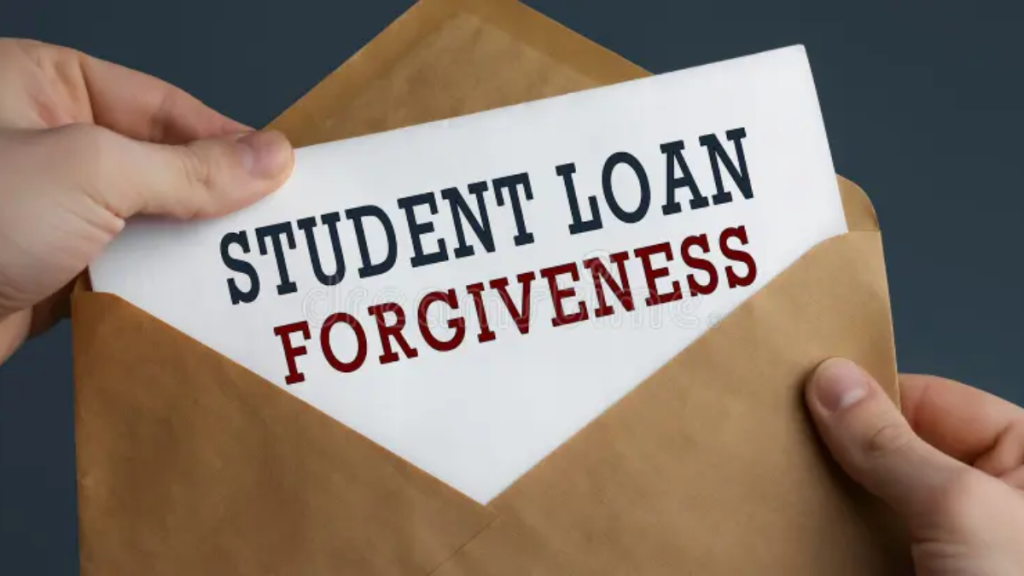With student loan debt exceeding $1.6 trillion in the United States, the pressure on borrowers remains immense. In 2025, the federal government continues to offer multiple student loan forgiveness programs aimed at helping individuals manage and eventually eliminate their student debt burden.
Whether you’re in public service, teaching, healthcare, or simply repaying loans under an income-driven plan, there may be a forgiveness option for you.
Below are seven student loan forgiveness programs you need to know in 2025—plus quick steps on how to apply for each.
1. Public Service Loan Forgiveness (PSLF)
The Public Service Loan Forgiveness (PSLF) program remains one of the most prominent forgiveness paths in 2025. It is designed for government and nonprofit workers who make 120 qualifying monthly payments while employed full-time in public service.
Key Requirements:
- Must work full-time for a qualifying employer (government or nonprofit)
- Must repay loans under an income-driven repayment plan
- Must make 120 qualifying monthly payments
How to Apply:
Use the PSLF Help Tool on the Federal Student Aid website to certify your employment and monitor your progress.
2. Teacher Loan Forgiveness
If you’re a teacher working in a low-income school or educational service agency, you may qualify for up to $17,500 in forgiveness after five consecutive years of service.
Eligible Positions:
- Secondary math or science teachers
- Special education teachers
Important Note: You can qualify for both Teacher Loan Forgiveness and PSLF, but not for the same period of service.
3. Income-Driven Repayment (IDR) Forgiveness
Income-driven repayment plans—such as SAVE (formerly REPAYE), PAYE, IBR, and ICR—offer forgiveness after 20 or 25 years of qualifying payments, depending on the plan.
SAVE Plan Benefits (2025 Update):
- Monthly payments are based on a smaller portion of discretionary income
- Forgiveness can come faster for borrowers with smaller original loan balances
How to Apply:
Apply for an IDR plan through studentaid.gov, and remember to recertify your income and family size each year.
4. Perkins Loan Cancellation
While Perkins Loans are no longer issued, borrowers with outstanding Perkins debt can still pursue cancellation. Those who work in public service—especially educators, law enforcement, and healthcare professionals—may qualify for incremental cancellation, up to 100% over five years.
How to Apply:
Reach out to the school or institution that originally issued your Perkins Loan for the application and documentation process.

5. State-Sponsored Forgiveness Programs
In addition to federal programs, many U.S. states offer student loan forgiveness initiatives aimed at addressing workforce shortages. These programs often target teachers, doctors, nurses, and lawyers.
Examples:
- Illinois: Teacher Loan Repayment Program
- California: State Loan Repayment Program for healthcare workers
- New York: Young Farmers Loan Forgiveness Incentive
How to Apply:
Visit your state’s department of education or student aid commission to see current offerings for 2025 and how to apply.
6. Total and Permanent Disability (TPD) Discharge
Borrowers who are unable to work due to a long-term disability may be eligible for a full discharge of their federal student loans.
Eligibility Requirements:
- Documentation from the VA, SSA, or a licensed physician
- No application fee required
Where to Apply:
Use disabilitydischarge.com to submit your TPD application and track its status online.
7. Borrower Defense to Repayment
Borrowers who were misled by their college or suffered due to institutional misconduct may qualify for loan forgiveness under the Borrower Defense program.
Common Misconduct Claims Include:
- False job placement data
- Misrepresentation of program accreditation
- Deceptive admissions practices
How to Apply:
Submit your claim with evidence through the Borrower Defense application portal.
How to Speed Up Your Student Loan Forgiveness Application
Applying fast is critical, especially with changing regulations and high demand. Here are tips to avoid delays:
- Create or update your FSA ID for full access to all federal applications
- Stay organized with documents like tax returns, income statements, and employment verification
- Check deadlines for income recertification or service year requirements
- Track progress online through your loan servicer’s dashboard
Make sure you follow all guidelines, keep a copy of everything you submit, and check your email for updates from the Department of Education or your servicer.
Conclusion: Know Your Forgiveness Options and Take Action Now
Student loan forgiveness opportunities in 2025 offer real relief to millions of borrowers—but only for those who act. Whether you qualify through public service, an income-driven plan, or due to hardship, understanding the right program and applying quickly can mean the difference between decades of payments and financial freedom.
For a complete overview and real-time updates, visit the official Federal Student Aid website. It’s your best resource for eligibility tools, application guidance, and links to each forgiveness program discussed above.
Disclaimer – Our team has carefully fact-checked this article to make sure it’s accurate and free from any misinformation. We’re dedicated to keeping our content honest and reliable for our readers.
